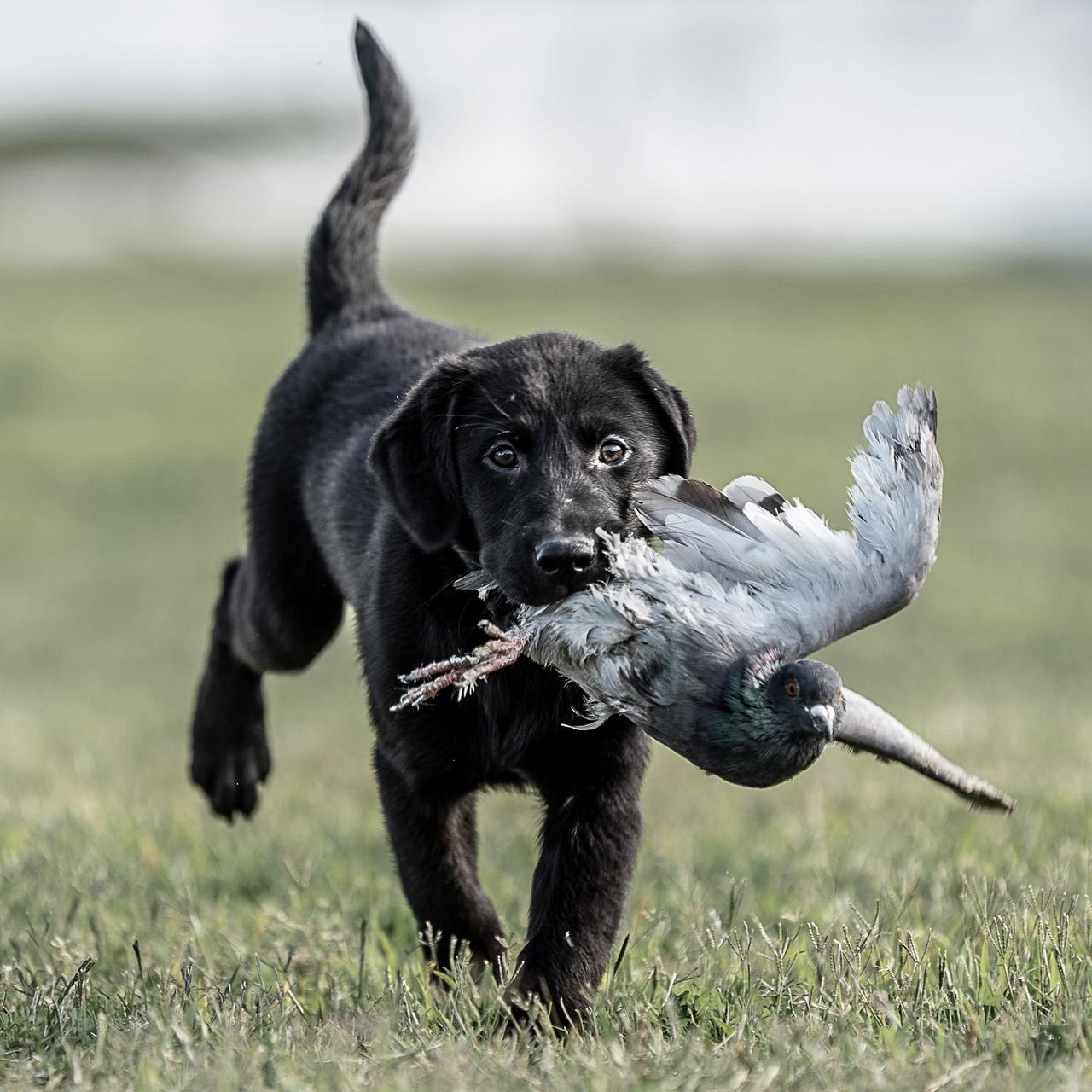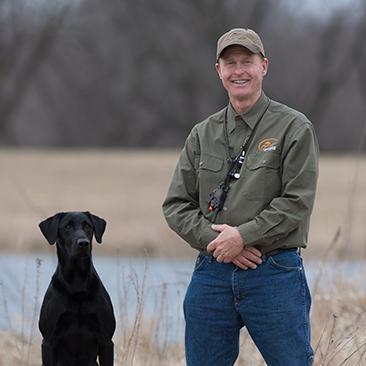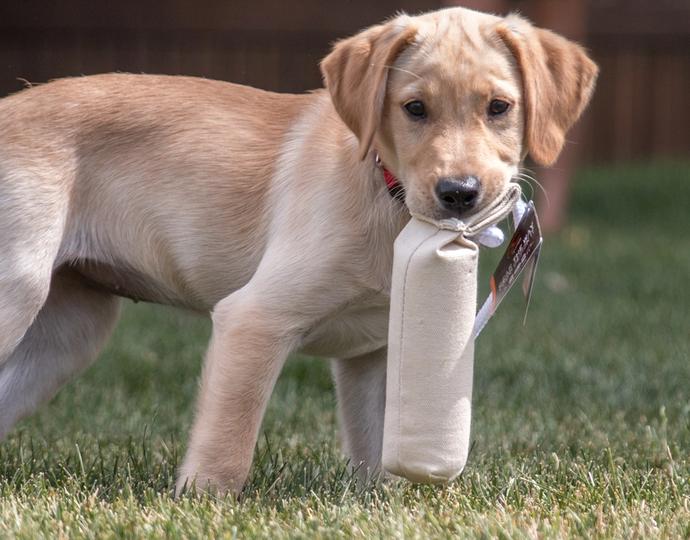
Make Your Upland Retriever Crazy for Feathers
Posted by Tom DokkenThere’s nothing better than a hard-charging flushing dog that is absolutely crazy for birds. But how do you make sure your young retriever will turn out like that? Here are the steps I use.
You can introduce your retriever to feathers when he is very young, say up to 12 weeks. I’m not talking about live birds just yet. Instead, this is as simple as taking a fresh pigeon or pheasant wing and just tossing it for him to retrieve. This is fun time – you want everything about feathers to be enjoyable.
Let your pup run after the wing, pick it up and carry it around. I suggest keeping your pup on a check cord while you’re doing this so he can’t run off with the wing and chew on it. Next, you want to get him excited about chasing and catching. Tie the wing on a string at the end of a pole and tease him with it. Let him catch it every now and then so his interest remains high.
At this stage, none of this is about serious retrieving exercises. All you’re doing is unlocking his desire to search, find and catch birds. After a few sessions of chasing and catching the wing, your job is done for now.
A few months later when your dog is around 6 months old – and assuming you’ve been working on your pup’s obedience training in the meantime, as you should be – it’s time to go to the next stage.
Start with a frozen pigeon. With your dog on a check cord, do some simple retrieving exercises out in the yard. Toss the pigeon where it lands in plain sight and encourage your dog to retrieve it. When he brings it back, really lay on the praise. Remember – feathers are always supposed to be fun.
If your dog hesitates to pick up the frozen pigeon, never, ever try to force him into picking it up. In fact, never do that with any object or you risk turning him off from the very thing you want him to do. One thing you can try is to tease him with the bird, get him excited about catching it and then toss it into some very light cover. With any luck he’ll bolt after it and pick it up and then want to get back out of the cover and find you again. When he does, again, really lay on the praise.
The next step in really ratcheting up the excitement is to go to a wing-clipped pigeon. This is simply a pigeon with its last six primary feathers removed. A wing-clipped pigeon can flap and flutter a short distance, but it can’t fly away. You unlocked the chasing instinct with that wing on a string when your pup was very young. Now your dog gets to chase the real deal, and if he has any drive at all, this should really bring it out in him.
Get your dog excited with the wing-clipped bird and then give it a toss out in the open and let your dog run it down. Pay close attention the first time you do this and watch for signs of hesitancy. For one thing, this is a brand-new object and experience. Secondly, those flapping wings might give him a slap to the face. The last thing you want is for your pup to develop a phobia about live birds. If you see this developing, simply tape the pigeons wings to its body until your dog builds more confidence.
After your dog is confidently chasing and catching clipped-wing pigeons, you can dizzy and plant fully feathered live pigeons in very light cover and have your dog look for them and flush them. He’ll catch some, but others will get away. That’s OK because you never want your dog to assume any bird is easy. You want to keep him busting cover and doing everything he can to try and catch every bird he encounters. Next, continue these drills in increasingly heavier cover so he has to use all of his senses to find and flush the bird.
I should also mention to run these exercises on a big piece of property far from any roads. Your dog may chase a flushed bird for a long distance and you don’t want to risk a tragedy. Leave yourself plenty of room to work.
These searching and flushing drills should then progress to the use of game birds. I suggest going next to a chukar partridge, which is larger but doesn’t have a real intimidating flush. From there, advance to hen pheasants and finally, when your dog is a confident and bird-crazy fiend, advance to rooster pheasants.
Always check your local and state regulations related to dog training and the use of game birds on private and public property.

Tom Dokken
Northfield, MN
Dokken brings more than 45 years of retriever-training experience to the SportDOG team. He is well known as the inventor of Dokken’s Deadfowl Trainer, which has become standard equipment for retriever trainers everywhere. He is the owner of Dokken Dog Supply and Dokken’s Oak Ridge Kennels, the largest gun dog...
Related Articles

Where to Begin with Puppy Training
by The SportDOG Staff
There are several different things that need to be done for and with a new puppy. First and foremost make sure all pup’s shots are on time and up to date. Find a local veterinarian and set up an appointment for your new companion. This is one of many places you...

Introducing Your Retriever to Upland Hunting
by Rick Grant
One of the most common questions I’m asked when I’m doing training demonstrations for SportDOG is this one: “How do I keep my retriever hunting in range?” Without a doubt, keeping your dog from getting too far out in front of you when he gets on the scent of a...

Keeping the Fun in Retriever Training
by The SportDOG Staff
Wouldn’t it be nice in the middle of a rough day if someone stopped by and said a few words that made all your cares go away? Instantly your negative feelings would disappear and you’d be happy. Well, in retriever training, there is something that can have that effect on...

Training Your Retriever to Dummies
by The SportDOG Staff
Training a retriever can be one of the most rewarding experiences any hunter can have. There are no secrets involved: just patience, repetition, perseverance, consistency and the ability to anticipate reaction. In short, the trainer needs to be just a little smarter than his pupil. This is not always as...

Training Your Retriever for Double Duty
by The SportDOG Staff
If you own a waterfowl dog, chances are that sooner or later you’re going to ask it to perform upland duty. It might be a pheasant hunt as a sideline to your Dakota duck hunt, or maybe an afternoon of quail hunting after a morning goose hunt. Most retrievers handle...

Getting Your Retriever in the Thick of Things
by Rick Grant
If you were going to go pheasant hunting on a farm where you’d never been before, where would you start your search? You would probably head for the thickest cover because you know that’s where birds feel safest and therefore tend to hang out the most, right? Well, when you...
